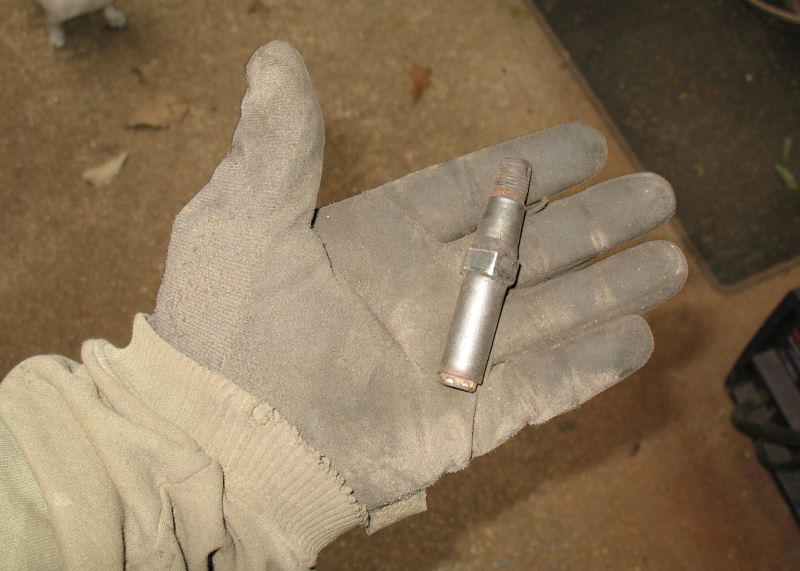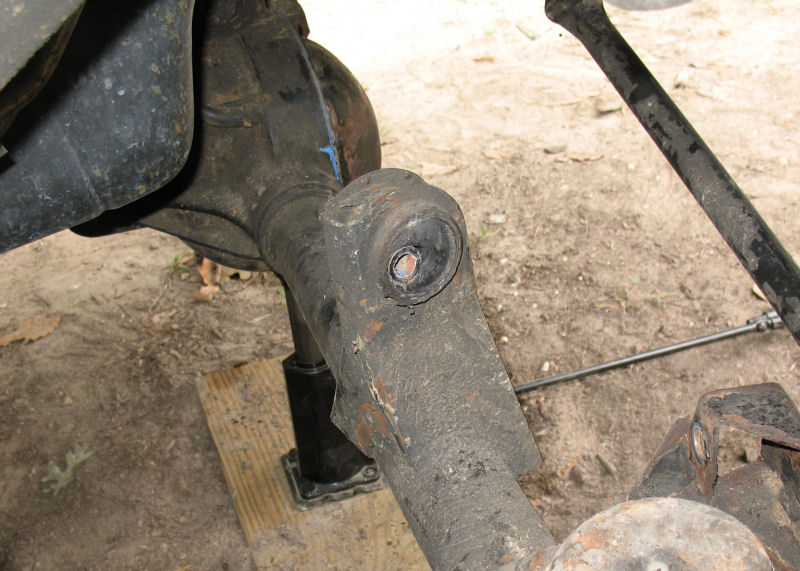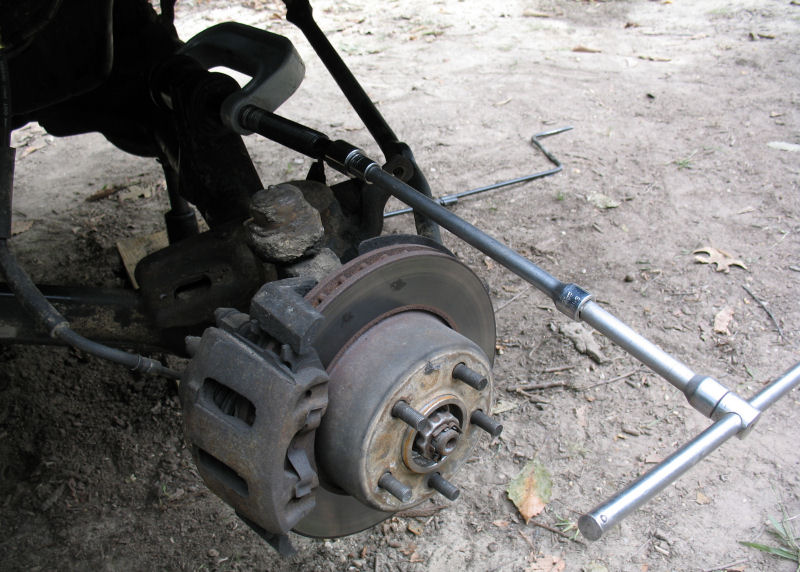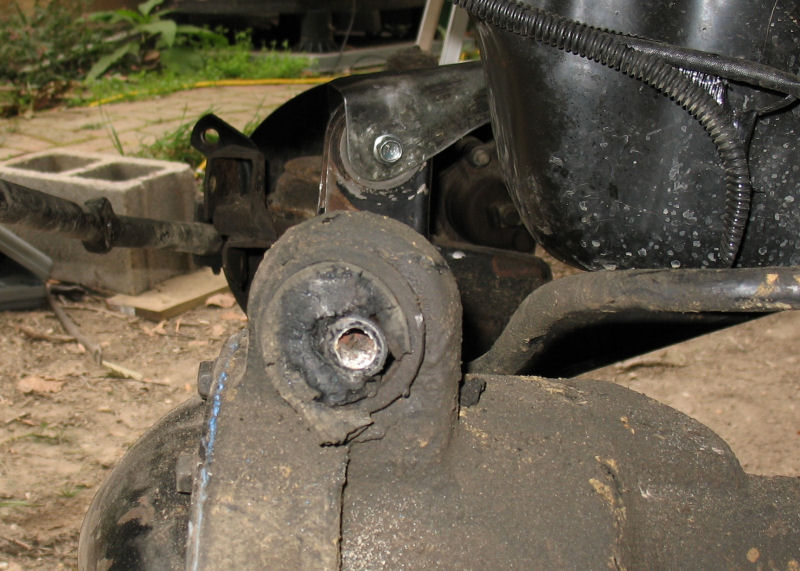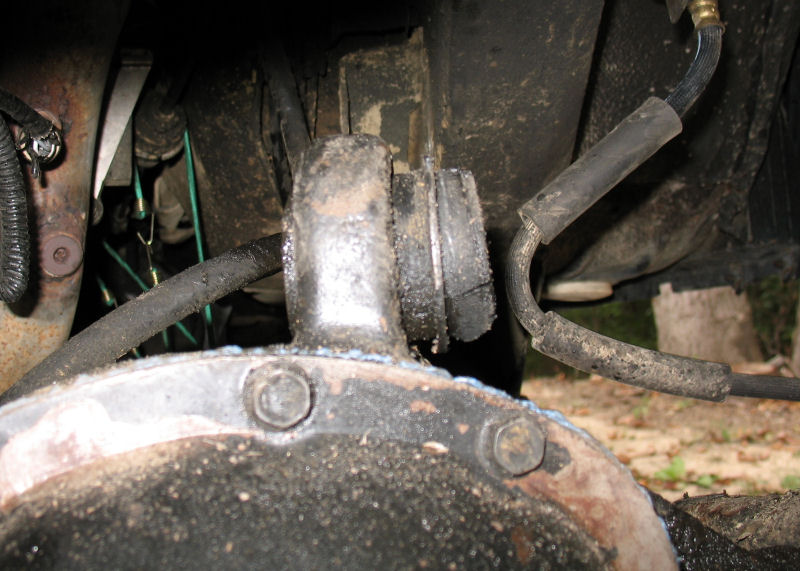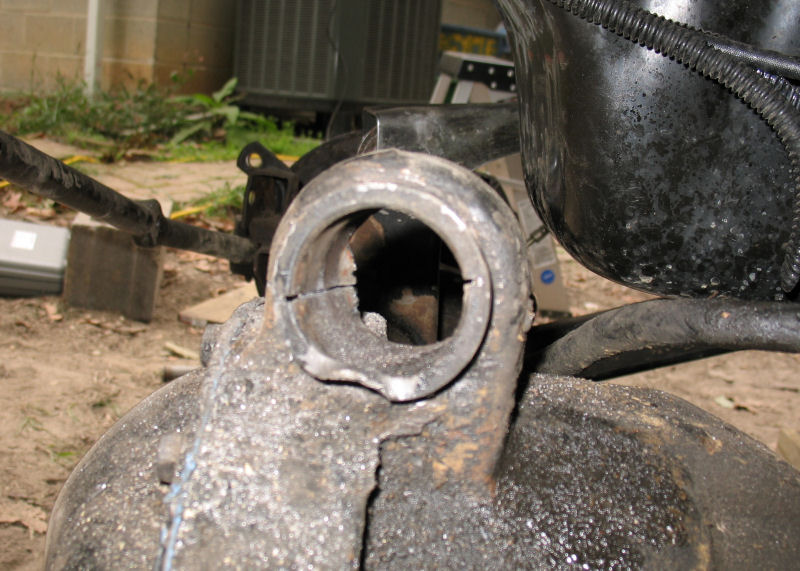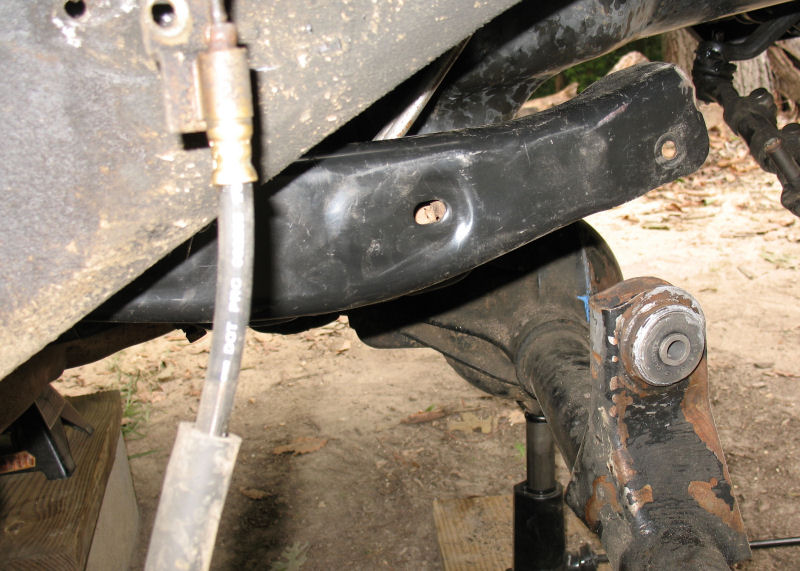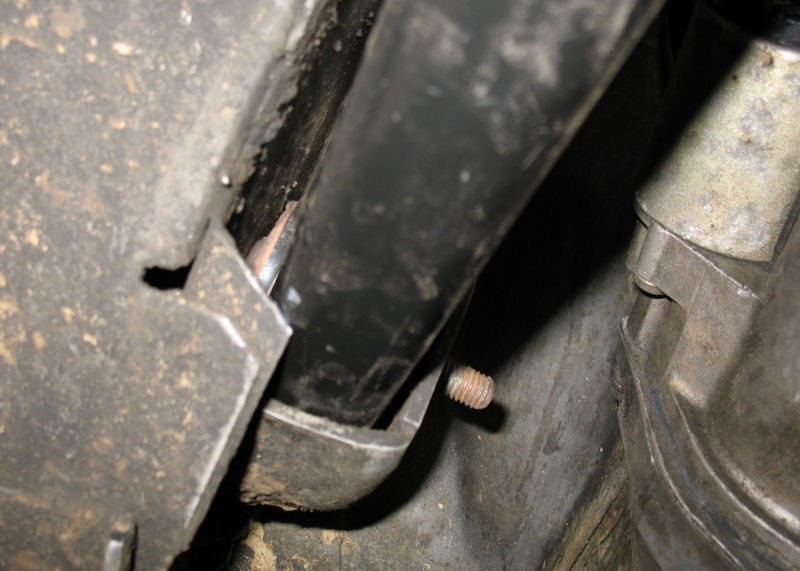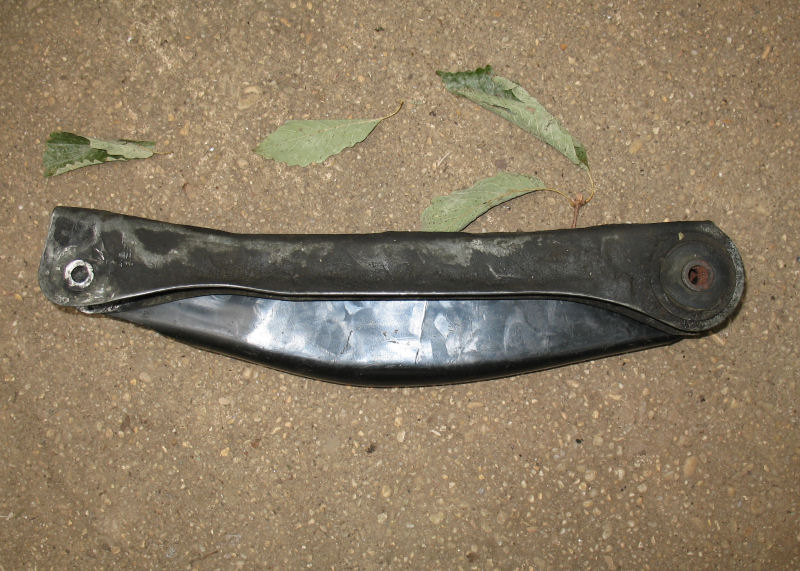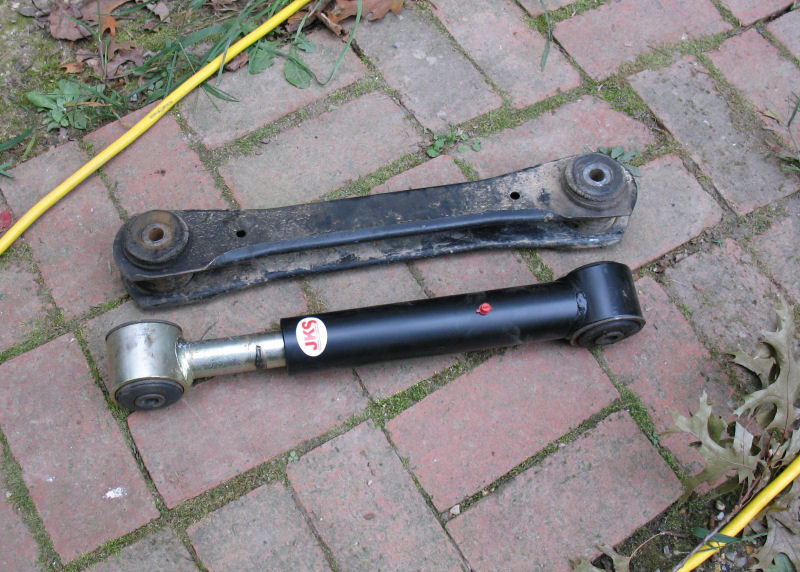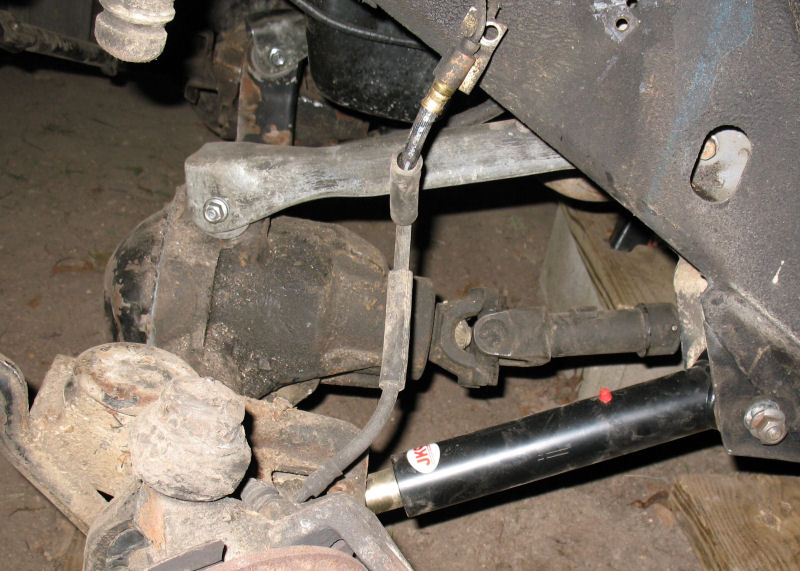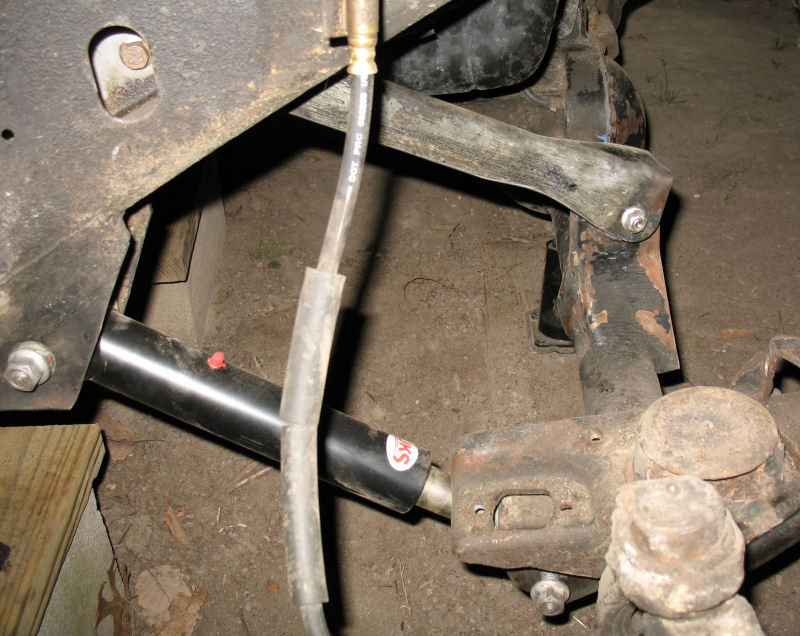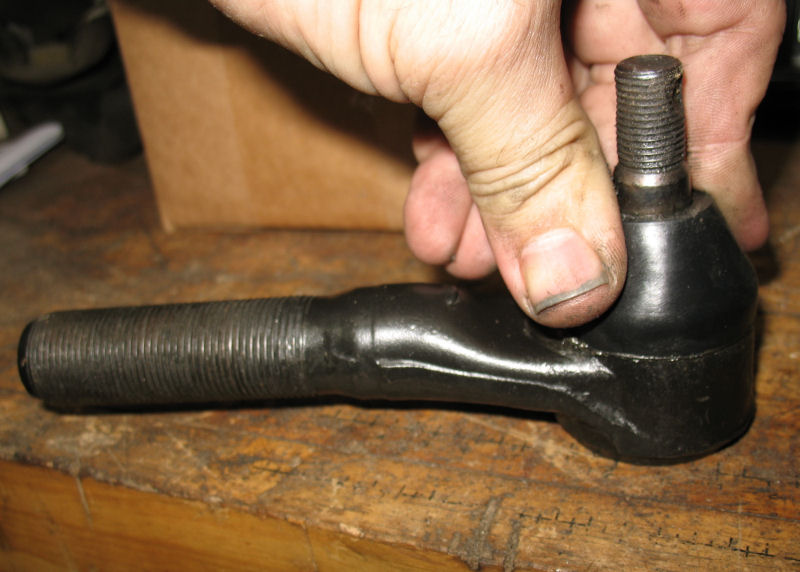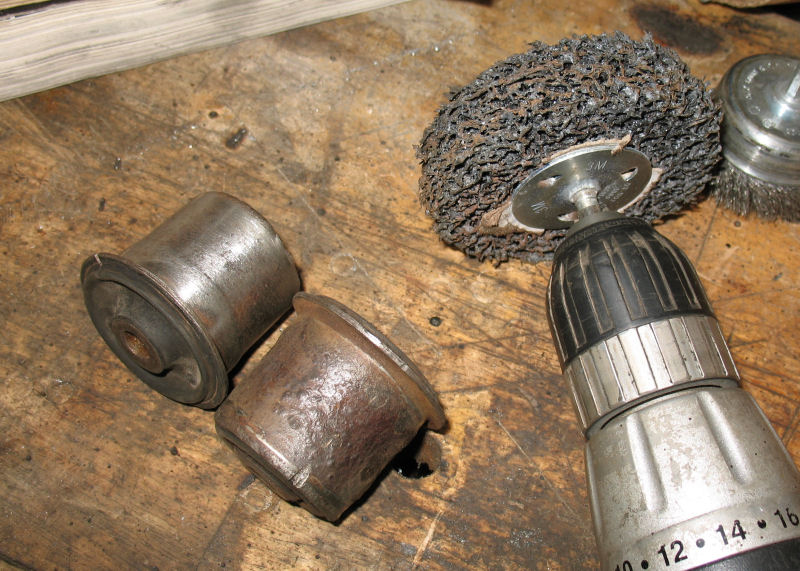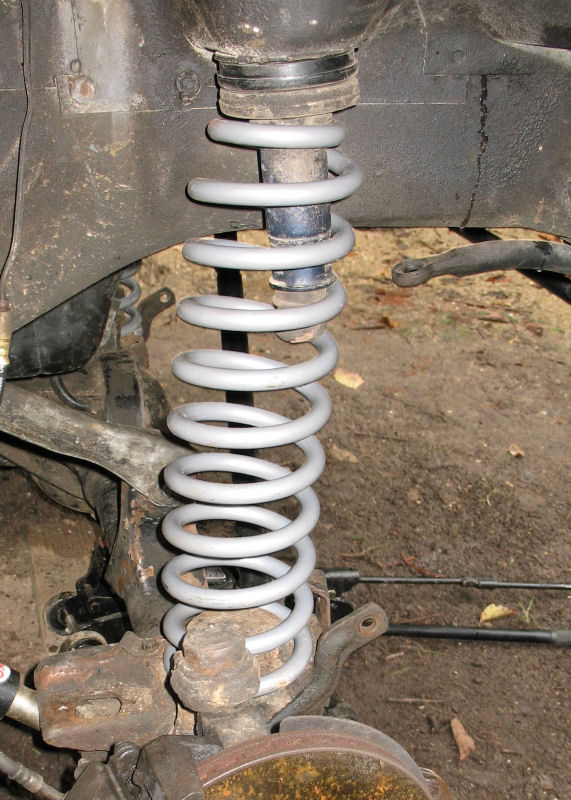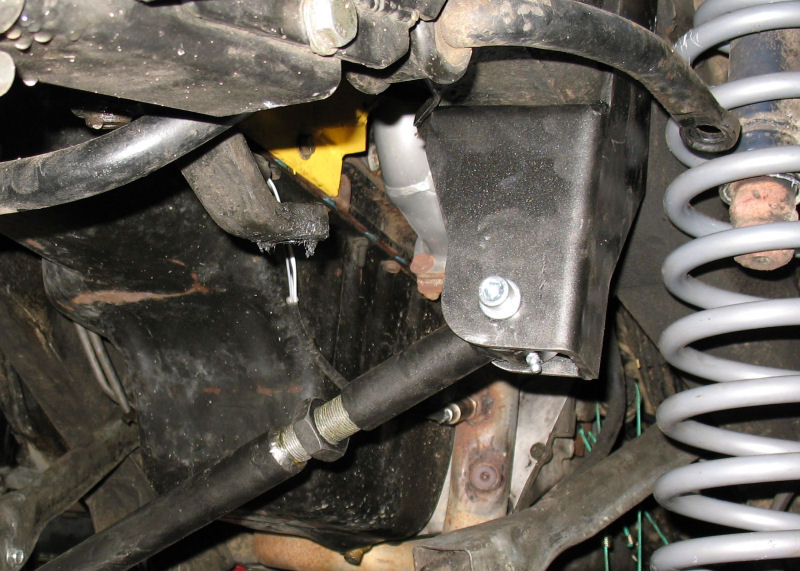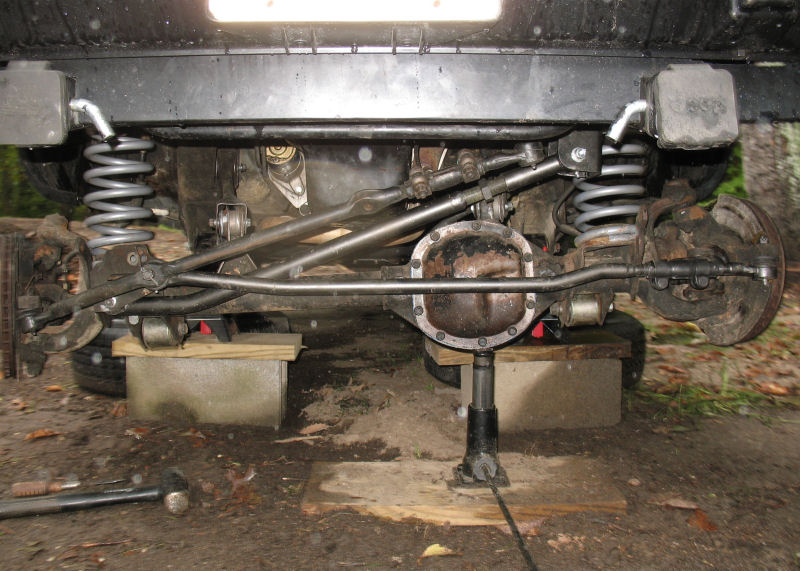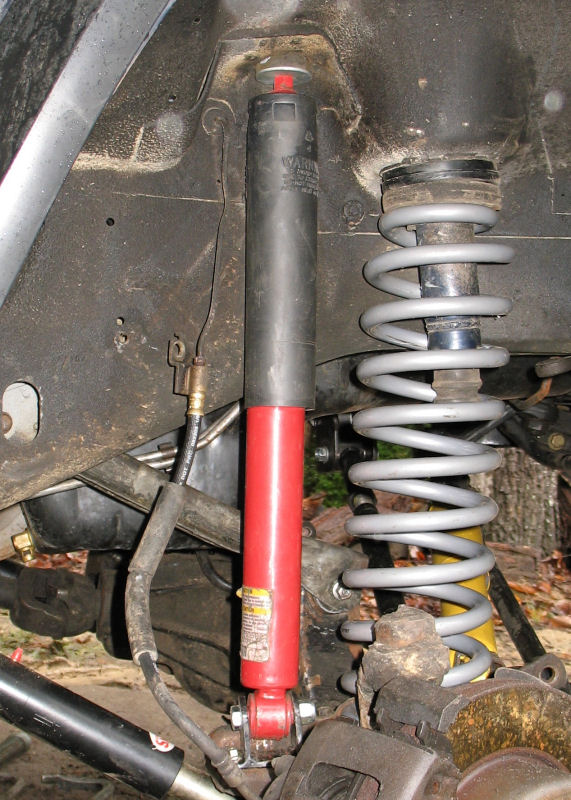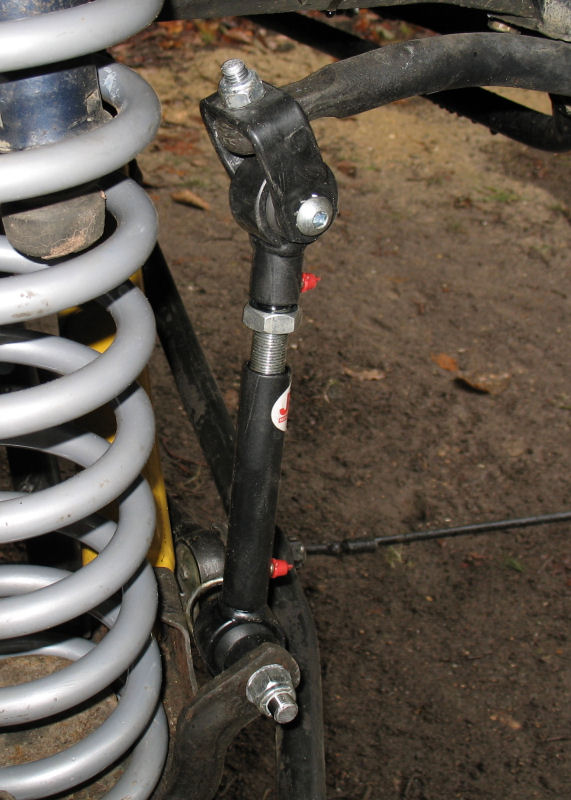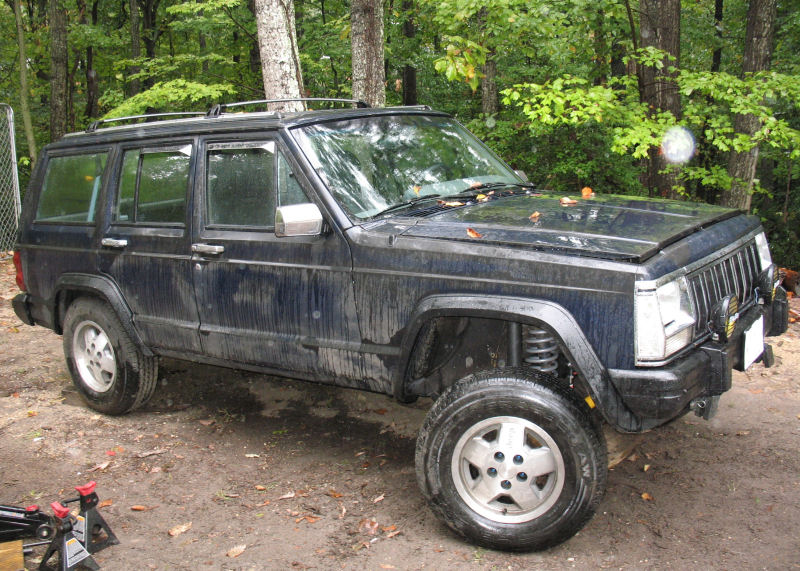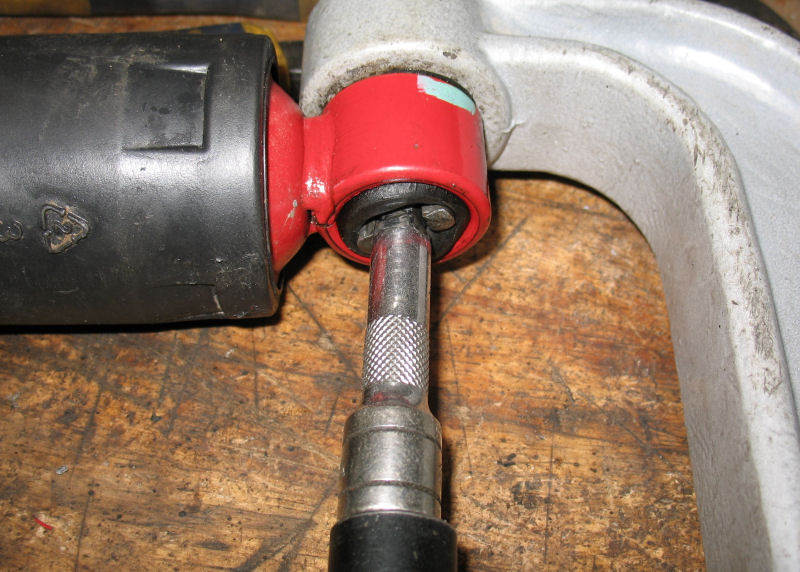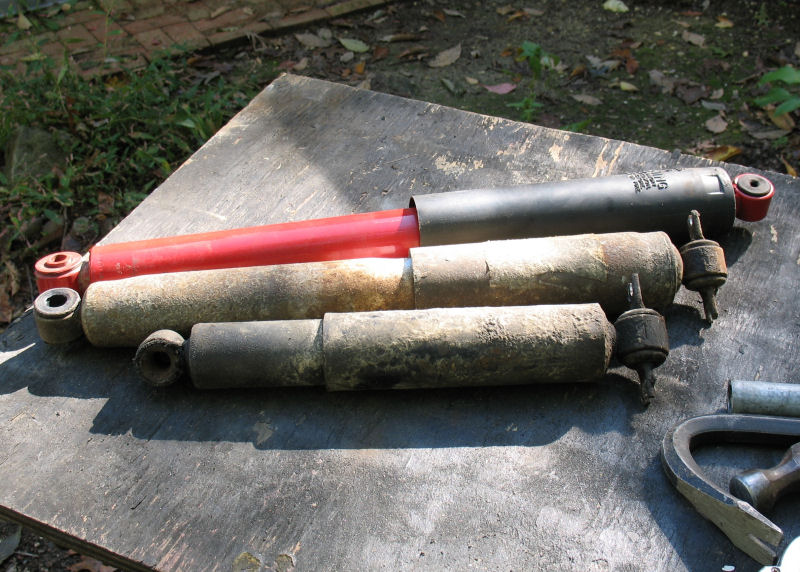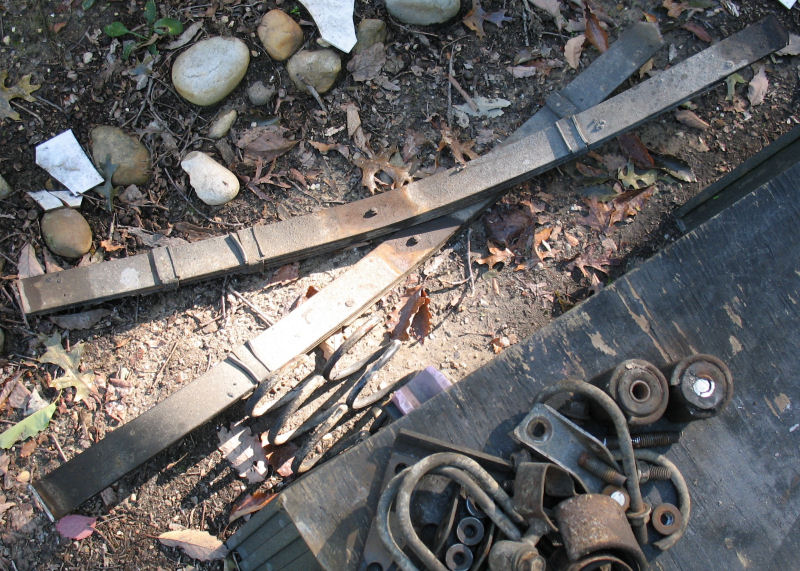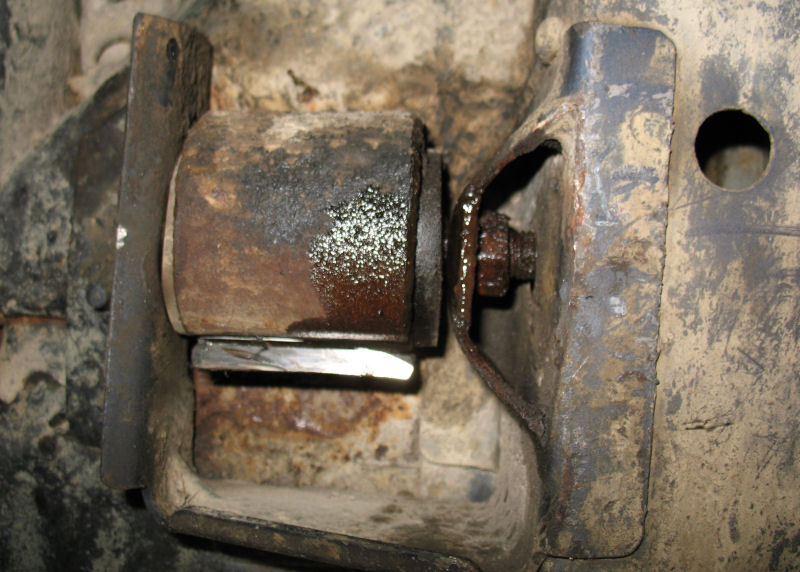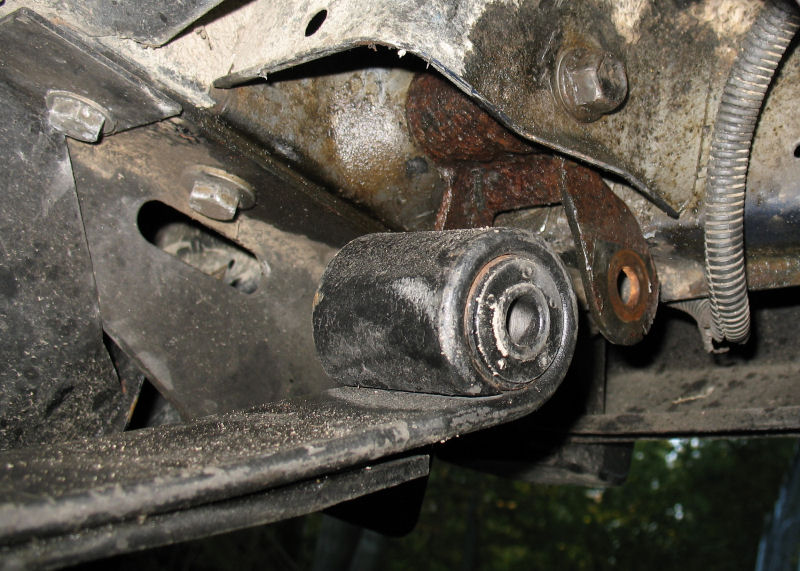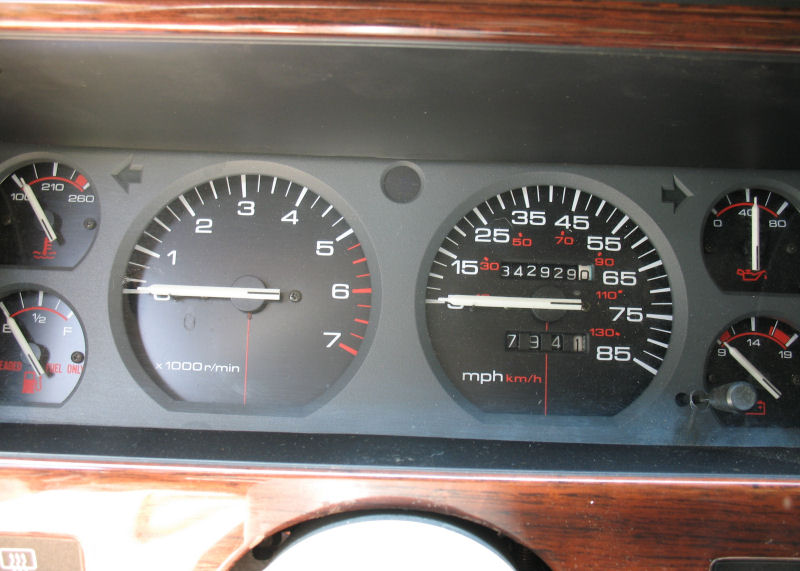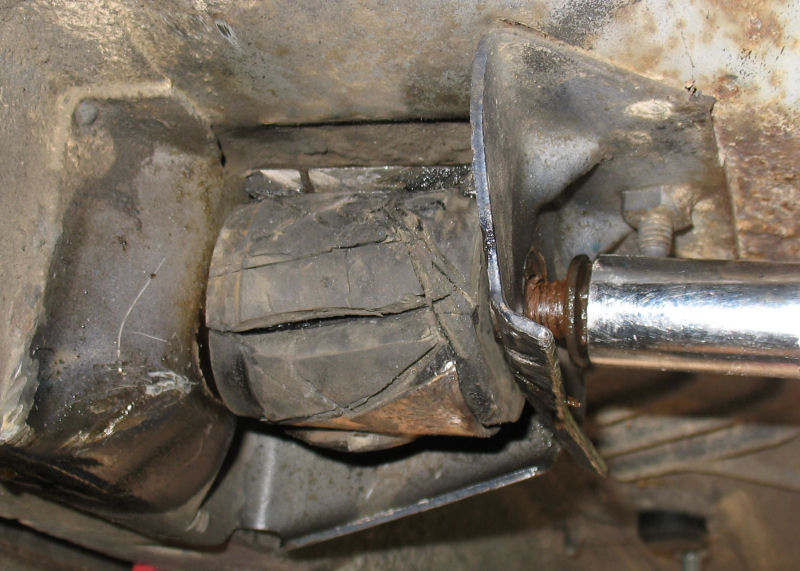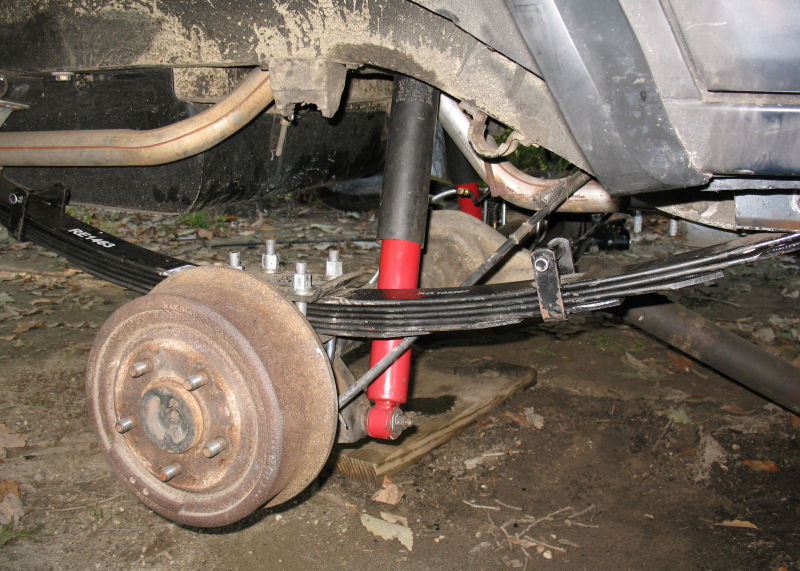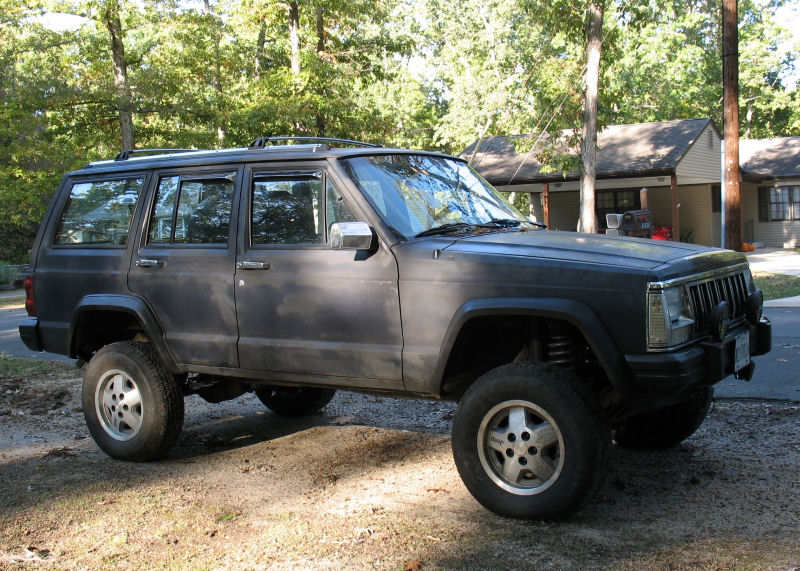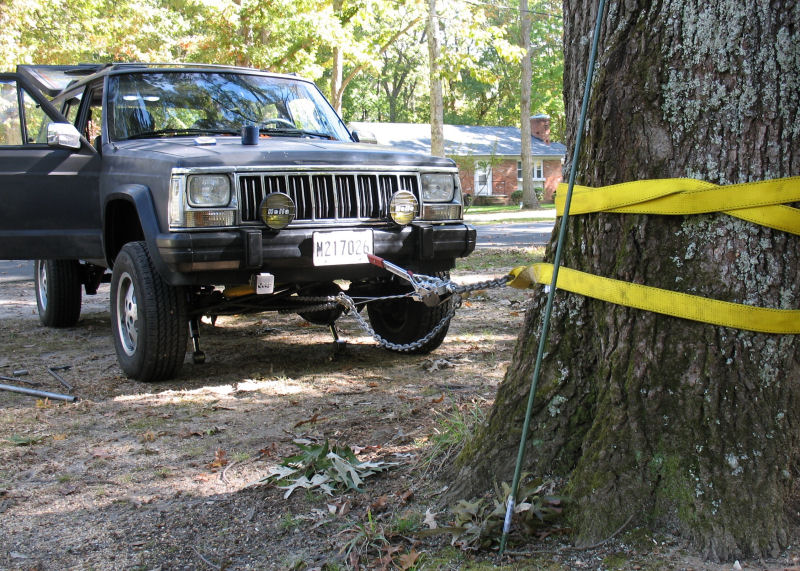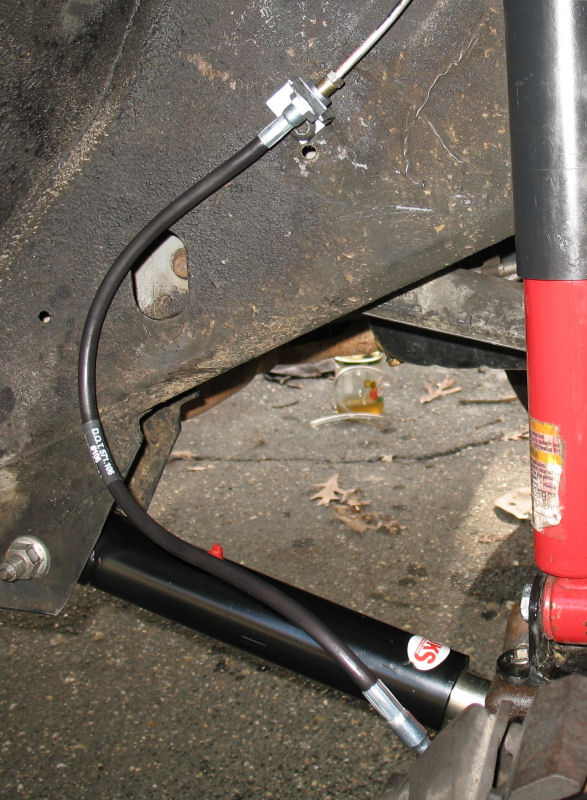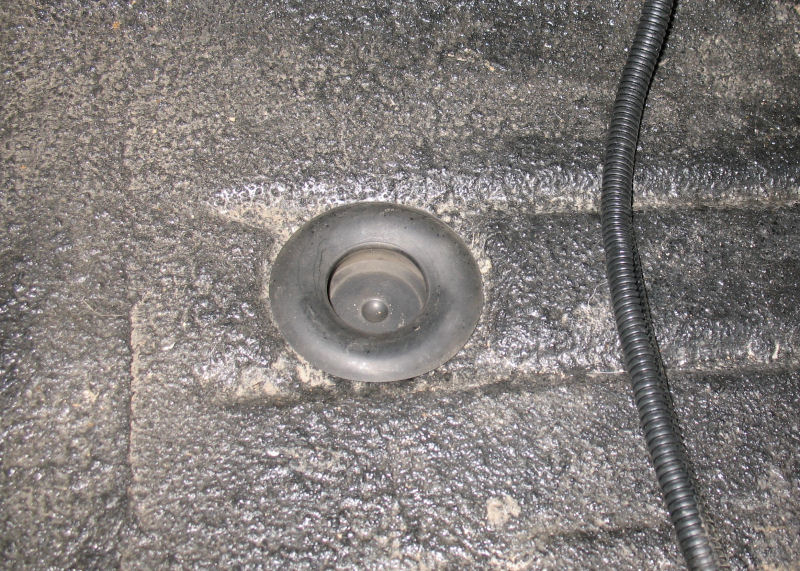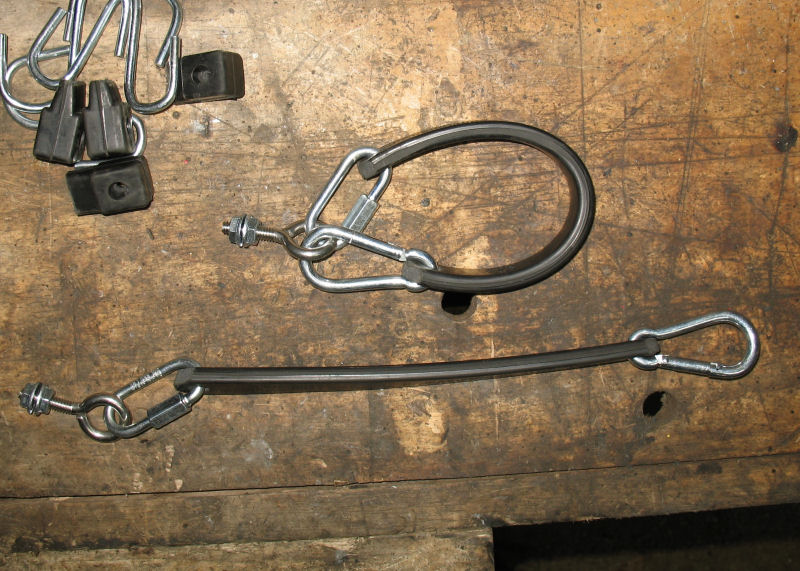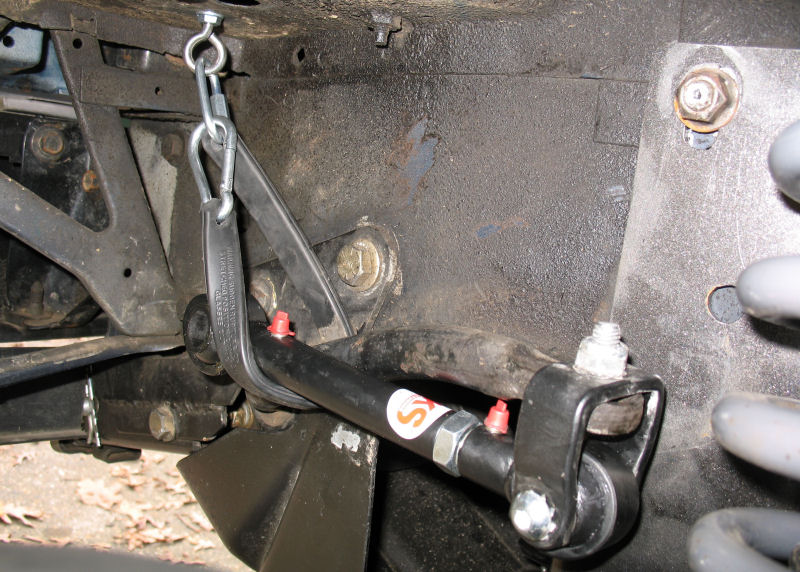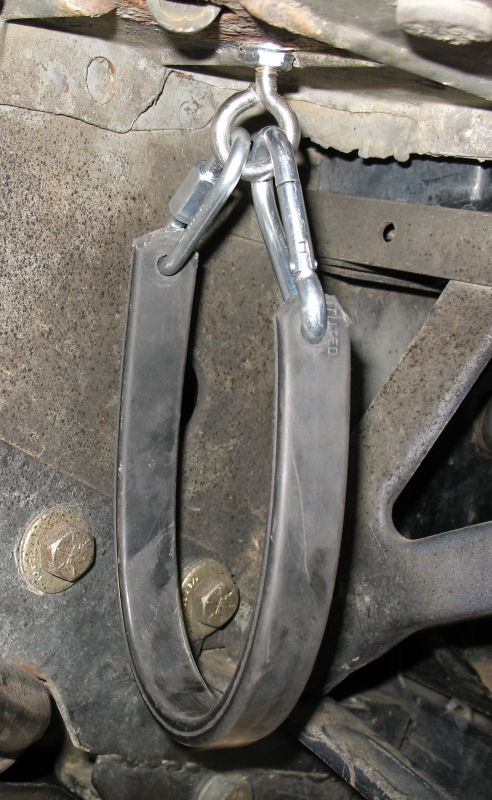I had to make a junkyard run for a couple of things and ended up fixing a few other unrelated problems as a by-product
One thing in particular the clips that held the front axle breather hose to the left UCA had long since disappeared, and I did not like having the hose flop around. While I was at the junkyard I noticed a headlight wiring loom that had the GM style circular anchors, so I grabbed a few of those and they work perfectly for the breather
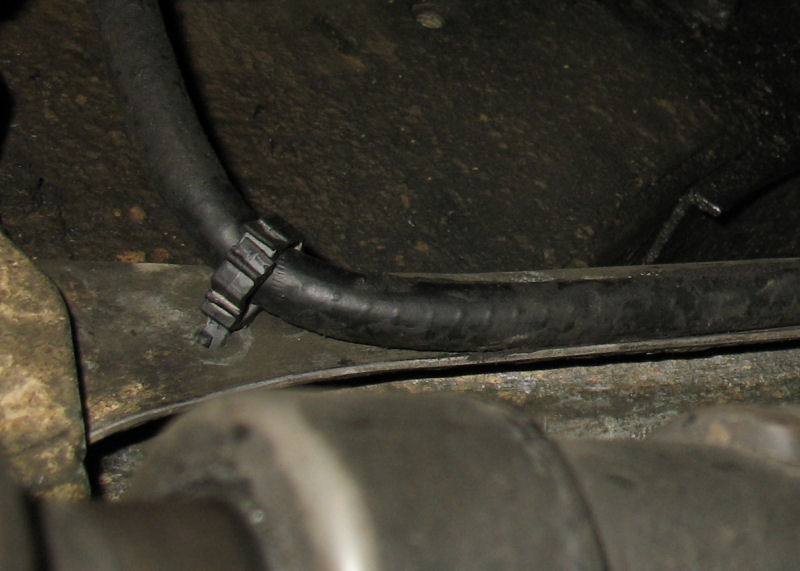
The right rear exterior door handle has always been hard to activate, requiring a deep push on the thumb button to release. However when I was pulling the jack in and out from under the seat, the thumb button decided to just stop activating altogether and I had to start opening the door with the inside handle (which still worked fine). I figured that it was probably a latch or the handle, so I grabbed one of each at the junkyard, and replaced them both. Unfortunately the handle still didn't release the door easily. After futzing with it for a while, I noticed that the door appeared to be slightly wider than the others and that the latch assembly was not pressed up against the inside skin... here you can see a large gap about 1 mm in size, while all of the other doors are flush
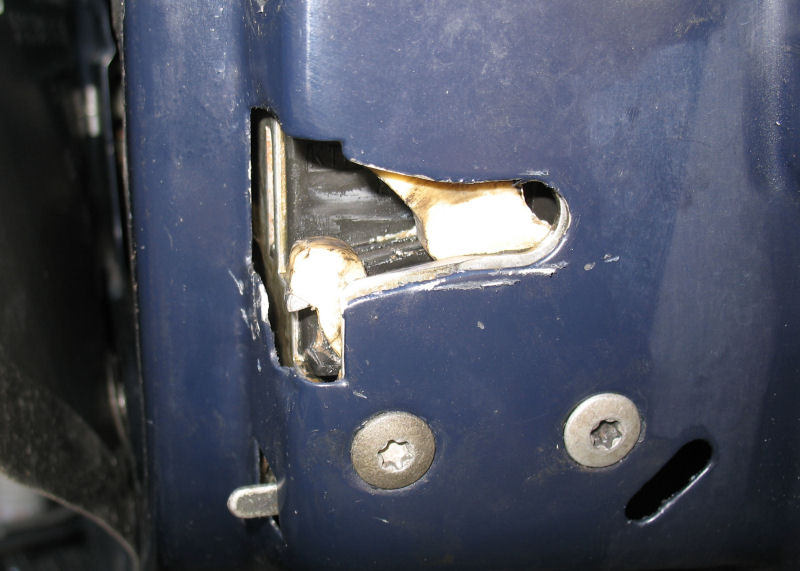
Looking at the problem some more, I also noticed that there was also a gap between the plunger under the thumb button and the lever that it pressed onto, which is why it was always hard to engage the door. Clearly the door is too wide for the hardware. This is quite curious--I had thought about replacing the door but as best I can remember I didn't do it. My guess is that the door was replaced when the rear end damage was repaired, or it was damaged in the accident somehow. I don't believe I've ever seen another door that was this wide so I have no idea what is going on.
Anyways once I figured out what the real problem was, I decided to try to bring the lever closer to the thumb rod. Because of the way that they connect it is not possible to really bend this up, however I thought I might be able to glue a nut to the lever so that there was something closer for the rod to press against. Looking through my drawers I found some #8 rubber well nuts which worked even better. By cutting the lip off the exposed part of the plunger rod fits with no slip, and the brass threaded insert provides a firm extension. PRoblem fixed--the door can be easily opened from the outside after who knows how many years
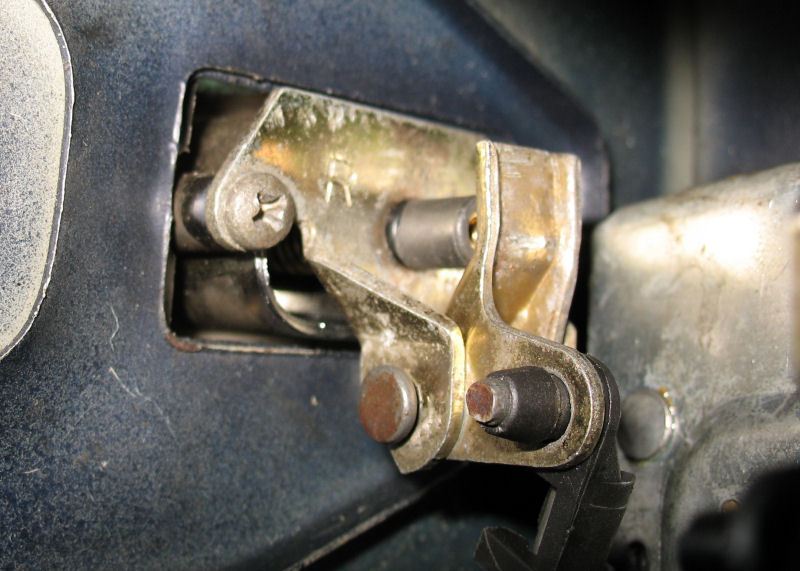
Another problem I've been having was minor leaks from the hatch. When we had the four days of rain during the lift this became a real problem since water was pooling up with the tools and parts in the cargo area. The problem is that the roof sheetmetal at the hatch opening does not run straight or even, but instead has minor indentations near the hinges, which results in less pressure on the weatherstripping at those points. When I added the wiring boot to the hatch, the additional material is enough to keep the hatch from sealing at that point and little drips were creeping in. I fixed this by getting some door edge trimming from autozone and cutting a couple of six-inch strips, and pushing them onto the pinch seam at the indented areas. This is enough to force the weatherstrip outwards, so that it can create a good seal against the hatch. This pic shows the difference--the overhead trim piece shows the original curve of the hatch line, and the weatherstripping shows the new straight seal. No more leaks
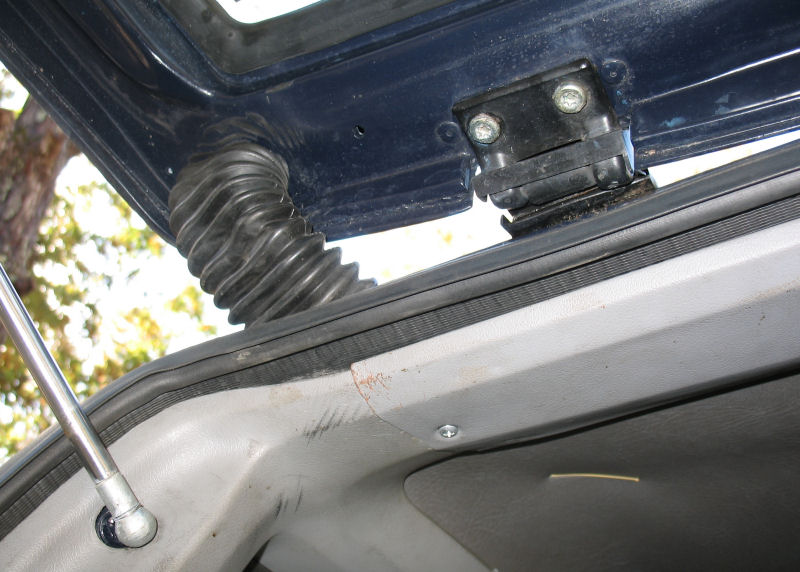
One other cheap fix was the 1.5" floorpan holes in back seat area. When I was at the junkyard I noticed the Durango has large body plugs in the A-pillars at the fender, and they work pretty well in the back floor. Although they are deeper than optimal they are cheap and work, and keep water and cold air from splashing into the back until I get around to a permanent fix using marine drains
